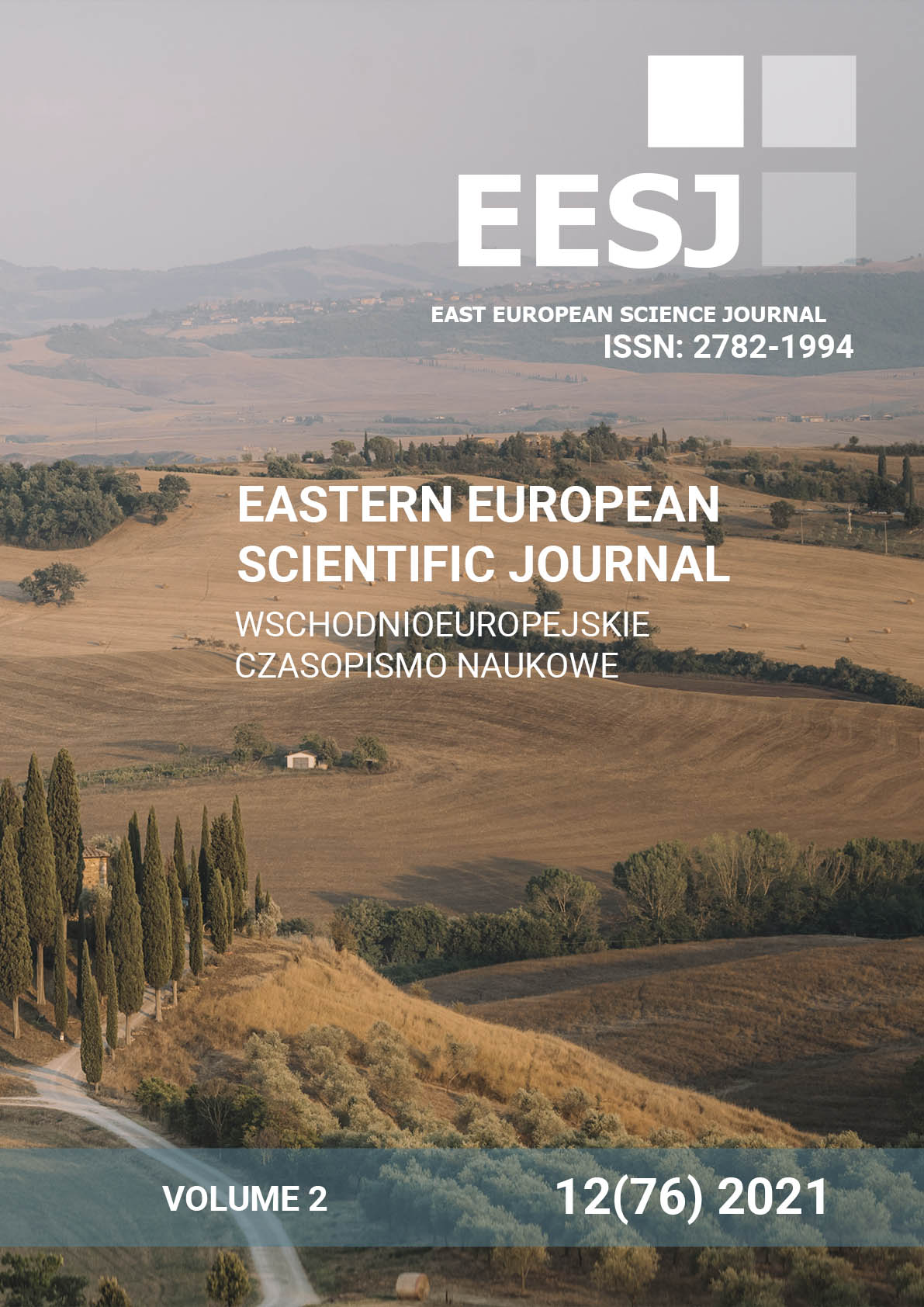MICROHARDNESS OF ENAMEL AND DENTIN OF CLINICALLY INTACT TEETH AND TEETH WITH CERVICAL PATHOLOGY
DOI:
https://doi.org/10.31618/ESSA.2782-1994.2021.2.76.200Keywords:
enamel, dentine, microhardness, wedge-shaped defect, precervical cariesAbstract
The paper presents the results of determining the microhardness of enamel and dentin using the method of indentation of the diamond-pointed pyramid of the device PMT-3 in the teeth with a wedge-shaped defect and teeth with cervical caries as well as their comparison with the indicators of intact teeth. Significant differences have been revealed depending on the type and presence of the pathology: in the enamel of the cervical region, in the dentin of the incisal edge (tubercle) and cervical region (p<0.05). Depending on the topography of the study area in the enamel the differences were unreliable (p> 0.05), in dentin they were statistically significantly different only in clinically intact teeth (p<0.05). The revealed features of microhardness of dental hard tissues are advisable to use when planning treatment and prevention of cervical pathology.
References
Pro J. W, Barthelat F. Discrete element models of tooth enamel, a complex three-dimensional biological composite. Acta Biomater. 2019 May 3. pii:
S1742-7061(19)30301-0. doi: 10.1016/j.actbio.2019.04.058.
Zajcev D. V., Grigor'ev S. S., Panfilov P. E. Dentin cheloveka kak ob#ekt issledovanija fizicheskogo materialovedenija. Problemy stomatologii 2013; 3:3-13. [Zaytsev D. V., Grigor'yev S. S., Panfilov P. Ye. Dentin of a person as an object of research in physical materials science. Actual problems of stomatology 2013; 3:3-13.
(In Russ.)]
Lucas P. W, van Casteren A. The wear and tear of teeth. Med Princ Pract 2015; 24 Suppl 1:3-13. doi: https://doi.org/10.1159/000367976
Ahmedbejli R. M. Sovremennye dannye o mineral'nom sostave, strukture i svojstvah tverdyh tkanej. Biomedicina 2016; 2:22-27. [Akhmedbeyli R. M. Modern data of mineral composition, structure and properties of hard tooth tissues. Journal Biomed 2016; 2:22-27. (In Russ.)]
Zolotuhina E. L. Mehanizmy uchastija zubnogo likvora v formirovanii svojstv tverdyh tkanej zuba. Molodij vchenij 2014; 2 (05):160–163. [Zolotukhina E. L. Participation mechanisms of dental liguor in the formation properties of dental hard tissues. Young scientist 2014; 2 (05):160–163. (in Russ.)]
Chuhraj N. L., Vinar V. A. Mіkrotverdіst' emalі zubіv іz rіznimi rіvnjami rezistentnostі. Ukraїns'kij stomatologіchnij al'manah 2017; 3:5-9. [Chukhray N. L., Vynar V. A. Microhardness of tooth enamel with different level of resistance. Ukrainian Dental Almanac 2017; 3:5-9. (in Ukr.)]
Gajdarova T. A., Eremina N. A. Sposob prizhiznennogo izmerenija tverdosti tkanej zuba. Bjulleten' VSNC SO RAMN 2007; 6 (58):92-95. [Gaydarova T. A., Eremina N. A. Method of intravital measurement of tooth rigidity. Bulleten VSNTS SO RAMN 2007; 6 (58):92-95. (in Russ.)]
Sorochenko G. V. Vivchennja mehanіchnih vlastivostej emalі postіjnih zubіv u perіod vtorinnoї mіneralіzacії metodom nanoіndentuvannja. Vіsnik naukovih doslіdzhen' 2015; 4:81-83. [Sorochenko G. V. Studying of mechanical features of enamel of permanent teeth in the period of secondary mineralization by nanointentation methods. Bulletin of Scientific Research 2015; 4:81-83. (in Ukr.)] doi: https://doi.org/10.11603/2415-8798.2015.4.5652
Zhang Y. R., Du W., Zhou X. D., Yu H. Y. Review of research on the mechanical properties of the human tooth. Int J Oral Sci 2014 Jun; 6 (2):61-9. doi:
1038/ijos.2014.21
Novak N. V., Bajtus N. A. Analiz fizikomehanicheskih harakteristik tverdyh tkanej zuba i plombirovochnyh materialov. Vestnik VGMU 2016; 15 (1):19-26. [Novak N. V., Baytus N. A. The analysis of physical-mechanical characteristics of hard dental tissues and filling materials. Vestnik VGMU 2016; 15 (1):19-26. (In Russ.)]
Jarova S. P., Zabolotna І. І. Diferencіjovanij pіdhіd do operativnogo lіkuvannja prishijkovih urazhen' tverdih tkanin zubіv. Novini somatologії 2017; 3 (92):84-87. [Yarova S. P., Zabolotna I. I. Differentiated approach to operative therapy of precervical injury of dental tissues Novini stomatologii 2017; 3 (92):84-87. (in Ukr.)]
Jarova S. P., Zabolotnaja I. I. Analiz pokazatelej mikrotverdosti jemali pri razlichnom sostojanii tverdyh tkanej i glubiny mikrotreshhin. Zaporozhskij medicinskij zhurnal 2013; 4 (79):117-120. [Yarova S. P., Zabolotnaya I. I. Analysis of enamel microhardness at various hard tissue states and depth of the microfissures. Zaporozhye Medical Journal 2013; 4 (79):117-120. (in Russ.)] doi: https://doi.org/10.14739/2310-1210.2013.4.16916
Remizov S. M. Opredelenie mikrotverdosti dlja sravnitel'noj ocenki zubnoj tkani zdorovyh i bol'nyh zubov cheloveka. Stomatologija 1965; 3:33-37. [Remizov S. M. Determination of micro hardness for the comparative evaluation of the dental tissues of healthy and diseased human teeth. Stomatologiya 1965; 3:33-37. (in Russ.)]
Zabolotnaja I. I. Rezul'taty kolichestvennogo rentgenospektral'nogo analiza prisheechnoj oblasti zubov. Medicinskij zhurnal 2013; 1:86-87. [Zabolotna I. I. Results of quantitative X-ray spectrum analysis of precervical teeth area. Medical Journal 2013; 1:86-87. (in Russ.)]
Daley T. J, Harbrow D. J, Kahler B., Young W. G. The cervical wedge-shaped lesion in teeth: a light and electron microscopic study. Aust Dent J. 2009; 54 (3):212-9. doi: 10.1111/j.1834-7819.2009.01121.x
Downloads
Published
Issue
Section
License

This work is licensed under a Creative Commons Attribution-NoDerivatives 4.0 International License.
CC BY-ND
A work licensed in this way allows the following:
1. The freedom to use and perform the work: The licensee must be allowed to make any use, private or public, of the work.
2. The freedom to study the work and apply the information: The licensee must be allowed to examine the work and to use the knowledge gained from the work in any way. The license may not, for example, restrict "reverse engineering."
2. The freedom to redistribute copies: Copies may be sold, swapped or given away for free, in the same form as the original.




